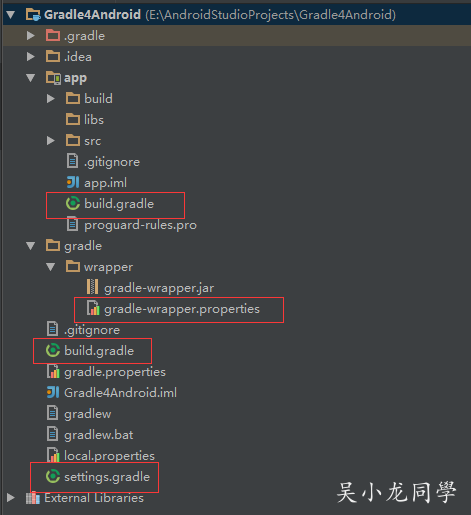Gradle是一种基于Groovy的动态DSL,而Groovy语言是一种基于jvm的动态语言。这里只分享实际开发中会用到的场景,您不需要去学习Groovy语言,知道Java的您是很容易阅读Groovy语言的。
系列博客涉及的知识点有:Gradle基本配置、依赖管理、全局设置、自定义BuildConfig、混淆、多渠道打包、配置签名信息、单元测试,是不是迫不及待了啊,快来学习学习。
基本配置
app/build.gradle
初始化的Gradle配置:
|
|
gradle-wrapper.properties
声明了gradle的目录与下载路径以及当前项目使用的gradle版本,这些默认的路径我们一般不会更改的
根目录的build.gradle
定义在这个工程下的所有模块的公共属性
setting.gradle
包含哪些模块,比如有app和library:
依赖管理
本地依赖
jar
默认情况下,新建的Android项目会有一个lib文件夹
so包
用c或者c++写的library会被叫做so包,Android插件默认情况下支持native包,你需要把.so文件放在对应的文件夹中
library工程
直接依赖library库:
aar文件
library库输出文件是.aar文件,包含了Android资源文件,在library工程build/output/aar/下,然后app目录下创建一个aars文件夹,然后把.aar文件拷贝到该文件夹里面,然后添加该文件夹作为依赖库:
app/bulid.gradle
如何生成.aar和.jar文件:
执行 ./gradlew assembleRelease,然后就可以在 build/outputs/aar 文件夹里生成aar文件,jar 包路径:build/intermediates/bundles/。
.jar和.aar区别:
*.jar:只包含了class文件与清单文件,不包含资源文件,如图片等所有res中的文件;
*.aar:包含所有资源,class以及res资源文件全部包含。
注意:
如果你的library依赖了第三方库aar,须app再次依赖。比如lib1依赖了lib2 的aar,app依赖lib1,需要:
远程仓库
|
|
完整配置
https://github.com/WuXiaolong/Gradle4Android
系列博客
Gradle for Android(二)全局设置、自定义BuildConfig、混淆
Gradle for Android(三)多渠道打包、配置签名信息
